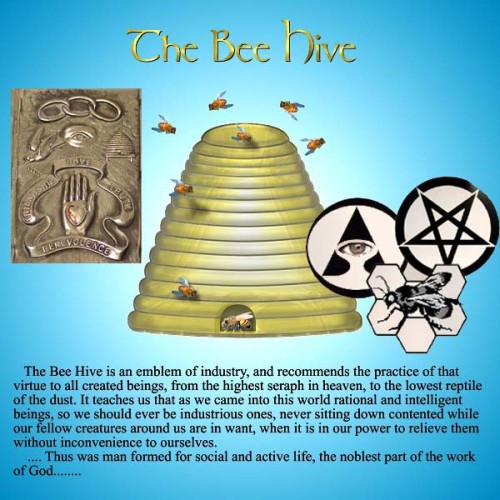
This article is about the mystery of the disappearing honey bee called Colony Collapse Disorder.
The honey bee continues to disappear at a dramatic rate worldwide. Many beekeepers estimate that, at the current rate of bee loss, there now may be only a ten year window to find a cause and a cure for this malady. In fact, the British Beekeepers Association has warned that honeybees could disappear entirely from Great Britain by 2018.
This mystery of the disappearing honey bee is called Colony Collapse Disorder (CCD). CCD is unique since it leaves bee hives with a queen bee, a few newly-hatched adults, and plenty of food, while all of the worker bees responsible for pollination just disappear. The truth is that the number of disappearing bees worldwide is quite staggering.
In the United States, beekeepers lost 35 percent of their hives last winter, after losing 30 percent the previous year. Internationally, similar widespread bee losses have been reported throughout Canada, Brazil, India and China, as well as throughout Europe
In general, international government agencies and organizations like the United Nations have done little to solve this escalating problem. In the United States, the House of Representatives held an emergency hearing last June on the status of bee pollinators in North America. The result of that hearing was an allocation of $5 million to honeybee research attached to the farm bill. However, that funding was subsequently cut in half during the last year. So far, in 2008, the U.S. Department of Agriculture has made just $4 million available to a consortium of universities for research into the problem of disappearing honey bees.
Unfortunately, international politicians are more focused on the potential warming effect of CO2 emissions on the planet during the next century. This apparent proactive approach to global climate change obscures the more immediate environmental threat that CCD poses to our health, diet, and food supply. Indeed, a world without the pollination of the honey bee would be truly devastating to national and international agriculture and it may occur within the next decade.
In fact, honey bee pollination is responsible for the growth of all fruits and many vegetables as well as livestock feed. It is estimated that bees pollinate one third of American food and three quarters of plants, including crops, fruits, vegetables, seeds, nuts, even cotton that is used in fabrics.
With the current lack of government response, the complexity of the research into the problem, and the rate of annual bee loss, it may be time for us to look at the world of agriculture without the pollination of the honey bee.
For an immediate glimpse of this dubious future, we can look to Maoxian County of Sichuan, China. It is an area that has lost it pollinators through the indiscriminate use of pesticides and the over-harvesting of its honey. The result is that hand pollination of pear and apple trees has become a common practice. In this part of China, the honey bee has been replaced by the human bee.
Consider that every spring for the last two decades, thousands of villagers have climbed through fruit trees hand-pollinating blossoms by dipping “pollination sticks”(brushes made of chicken feathers and cigarette filters) into plastic bottles of pollen and then touching them against each of the tree’s billions of blossoms. Could this method of pollination be a glimpse of our future? Humans replacing bees by hand pollinating trees and plants in an attempt to produce one third of our food staples.
Of course, it will be expensive to hire human bee pollinators. Remember that nature used to provide this service in the past for free. Consider that the cost of the loss of the pollination of the honey bee has been estimated at anywhere between fourteen billion and ninety two billion dollars in the United States alone.
In fact, many farms may not be able to profitably pass on such a large cost to consumers, resulting in many food staples that will no longer be grown. Of the food supply that will remain, price inflation will leave it out of the economic reach of many worldwide. Global famine will increase and diets will change. The result will be dramatic devastation for international human health.
In the future, other types of bees could potentially be trained as pollinators. However, to date, that experiment has not shown a great deal of efficiency. The result of CCD may well mean the honey bee will be replaced by the human bee. Unfortunately, the human pollinator is an expensive agricultural answer and does not provide a feasible solution to the environmental problem of disappearing honey bees.
James William Smith has worked in Senior management positions for some of the largest Financial Services firms in the United States for the last twenty five years. He has also provided business consulting support for insurance organizations and start up businesses. Visit his website or his daily blog.
– James Smith

The reason for Colony Collapse Disorder is the use of new systemic pesticides called neonicotinoids. They are neurotoxins and kill bee colonies often after several months delay, making it difficuldt for the beekeeper to identify the culprit.
The pesticide industry has infiltrated scientific bodies, beekeeping institutes and even beekeeping associations to spread disinformation, hiding the connection to the pesticides and blaming the bee decline on diseases and other factors. Anybody pointing out the real reason is labeled a troublemaker, there’s a lot of money at stake for the industry.
For more info read Michael Schacker’s book Spring Without Bees.